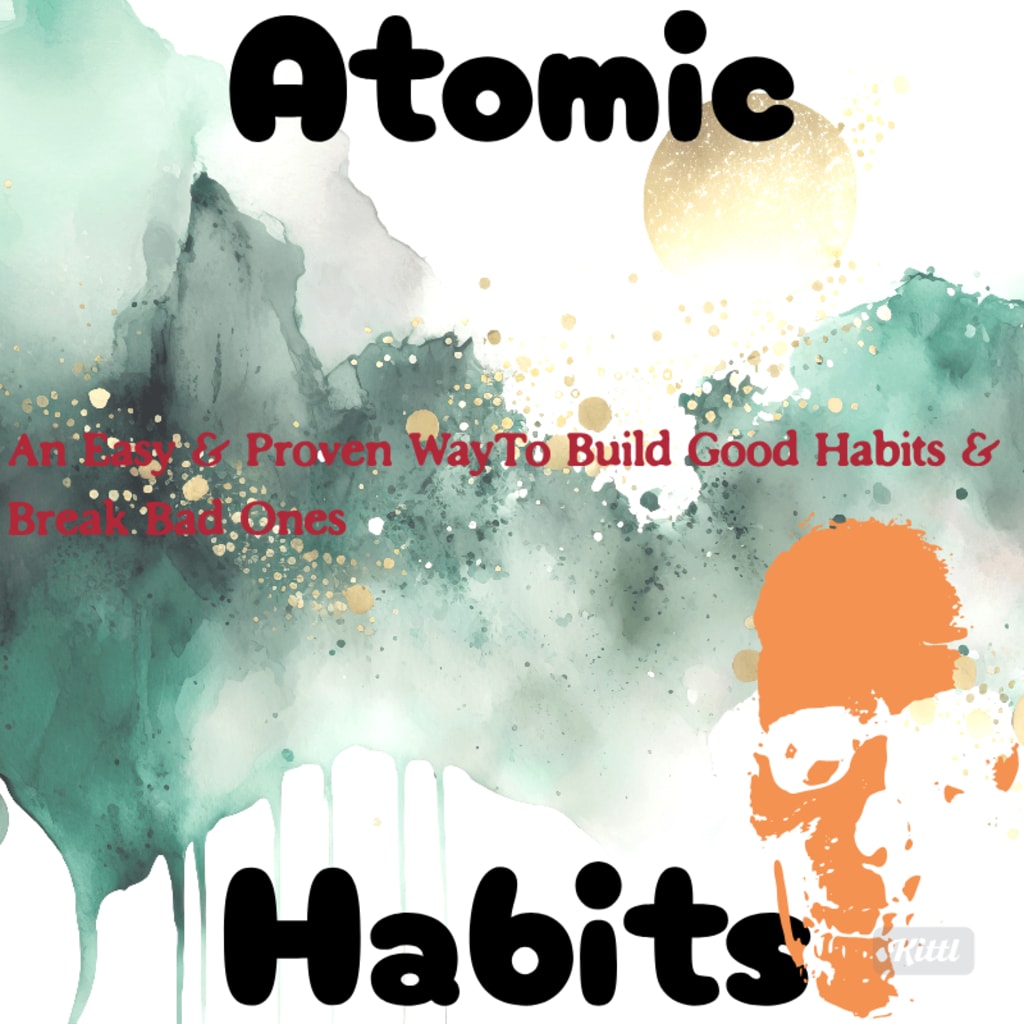Atomic Habits
An Easy & Proven Way to Build Good Habits & Break Bad Ones

James Clear's ground-breaking book "Atomic Habits" examines the physics and psychology of habits and offers helpful tips for creating and breaking them. In this 2000-word summary, we'll go into the book's most important ideas and insights to explain how to use small changes to achieve big outcomes.
Introduction
"Atomic Habits" is a thorough manual for comprehending and altering your habits so that you can bring about long-lasting improvements in your life. James Clear, a writer, lecturer, and specialist on habit formation, offers a plan for gradually enhancing habits by drawing from empirical data, practical examples, and personal tales.
The Surprising Power of Atomic Habits is Chapter 1 of the book.
The idea of "atomic habits," which are brief, fundamental adjustments that have the potential to produce enormous advancements over time, is introduced by Clear at the outset. He explains that small changes can have a big impact and that habits are the self-improvement equivalent of compound interest.
How Your Habits Shape Your Identity (and Vice Versa) (Chapter 2)
In this chapter, Clear investigates how habits and identity are intertwined. He contends that you can progressively change your self-identity by forming new behaviors. On the other hand, if your identity changes, your habits will too. For long-term behavior modification, Clear highlights the need of concentrating on being the kind of person you want to be.
How to Develop Better Habits in 4 Easy Steps, Chapter 3
The four processes of cue, craving, response, and reward are presented by Clear as a useful framework for creating and upholding healthy behaviors. He discusses how habits develop and shows you how to use this framework to develop healthy habits.
Make It Obvious: The First Rule of Behavior Change (Chapter 4)
Making your intended behaviors evident is the first rule of behavior change. Clear explores the significance of cues—the events that set off your habits—and provides advice on how to make cues more obvious in your day-to-day activities. He also introduces the idea of habit stacking, which is when you combine a new habit with an already-established one.
Make It Attractive: The Second Law of Behavior Change (Chapter 5)
Making your behaviors appealing is the second law of behavior change, according to Clear. He emphasizes the part that yearning and the need for a reward play in the development of habits. You might improve your incentive to maintain your behaviors by linking them with something enticing.
The third law of behavior change is "Make It Easy" (Chapter 6).
Making your habits simple to follow is the third rule of behavior change. Clear contends that the creation of habits requires simplicity. He provides methods to lessen resistance and make it simple to practice good habits while making bad ones challenging.
Make It Satisfying: The Fourth Law of Behavior Change (Chapter 7)
Making your habits satisfying is the fourth law of behavior modification. Clear talks on the value of quick rewards and offers advice on how to design a system that strengthens your behaviors. He presents the concept of "habit tracking" to track your development and acknowledge tiny accomplishments.
How to Make a Habit Irresistible (Chapter 8)
The psychology of temptation is examined by Clear, who also provides advice on how to make your good behaviors more alluring than your bad ones. He stresses the significance of creating an environment that supports your intended actions and introduces the idea of "temptation bundling."
Chapter 9: How Your Friends and Family Shape Your Habits
In this chapter, Clear explains how social circumstances affect how habits are formed. He describes how your social environment can affect your habits and provides tips for building social networks that are encouraging and supportive of good conduct.
How to Identify and Eliminate the Root Causes of Your Bad Habits (Chapter 10)
In his book, Clear investigates the idea of habit reversal, which entails locating the reasons of unfavorable behaviors and dealing with them. He offers workable methods to end your harmful behaviors and a framework for identifying the causes and driving forces behind them.
Chapter 11: Walk Gradually, but Never Reverse
Even if development is sluggish, it must be maintained, according to Clear. He introduces the idea of the "plateau of latent potential" and emphasizes that your efforts frequently yield results that aren't immediately apparent. He exhorts readers to be persistent and patient as they work to develop new habits.
The Best Way to Begin a New Habit (Chapter 12)
Clear provides advice on how to successfully establish new behaviors. He talks about the importance of identity, surroundings, and the two-minute rule, which states that you should establish a habit by doing anything that will take you less than two minutes to do.
"The Cardinal Rule of Behavior Change" (Chapter 13)
To never miss twice, according to Clear, is the golden rule of behavior modification. He emphasizes that making mistakes now and then is common, but that it's crucial to get back on track right away to prevent a second slip-up.
How to Maintain Good Habits Every Day (Chapter 14)
Clear offers advice on how to keep your routines consistent. He talks on the importance of accountability, habit tracking, and the "Seinfeld Strategy" for creating a string of good habit days.
How to Get Over a Bad Day is the subject of Chapter 15.
Clear accepts that failures will happen, but he provides advice on how to recover from difficult days and stay away from the "all-or-nothing" mentality that can stall growth.
The Law of Least Effort, Chapter 16
The law of least effort, which says that people typically pick the path of least resistance, is introduced by Clear. He talks about how to take advantage of this law by setting up your environment in a way that makes good habits simpler and bad ones more difficult.
How to Make Significant Changes in Your Life, Chapter 17
Identity-based behaviors are discussed by Clear along with how they might result in substantial life changes. He stresses the importance of consistency and exhorts readers to concentrate on tiny adjustments that are consistent with their intended identities.
How to Create Habits in the Real World, Chapter 18
Clear addresses typical roadblocks and dangers in habit formation, including managing hectic schedules, managing conflicting priorities, and adjusting to life changes. To overcome these hurdles in the actual world, he gives workable answers.
Conclusion of Chapter 19: The Key to Long-Lasting Results
Clear highlights the main ideas of habit development in the conclusion and emphasizes the idea that the path to self-improvement is never-ending. For long-lasting effects, he stresses the significance of continuously enhancing and perfecting your habits.
Appendices
In the appendices, Clear offers extra materials and tools, such as habit tracking templates, habit contract samples, and a list of suggested reading for deeper investigation of habit-related issues.
Conclusion
James Clear's book "Atomic Habits" is a thorough manual for comprehending the physics behind habits and using that understanding to change your life. Anyone may create great habits and effectively break bad ones thanks to Clear's useful insights and concrete recommendations. Readers can use the power of atomic habits to produce extraordinary and long-lasting effects in a variety of areas of their lives by concentrating on little, incremental adjustments and comprehending the psychology of behavior. Sign-Up for Free





Comments
There are no comments for this story
Be the first to respond and start the conversation.